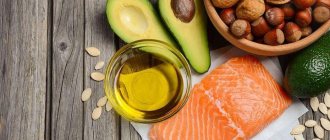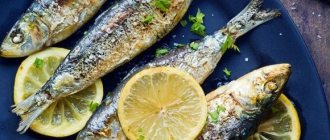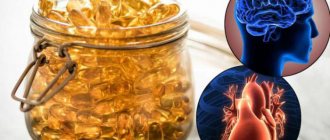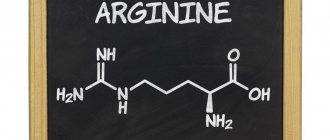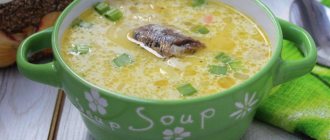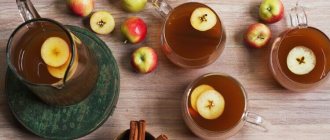November 13, 2012
Not every type of fish is suitable as a source of Omega-3 fatty acids. We tell you where to look for these healthy fats.
It’s not for nothing that fish is called “brain food”: it contains essential Omega-3 fatty acids. According to scientists, these “good” fats are a powerful anti-inflammatory agent that helps the body prevent a wide variety of diseases - from vision loss to Alzheimer's disease. However, not every type of fish is suitable as a source of Omega-3 fatty acids. The inhabitants of cold waters are rightfully considered to be the leaders in the content of these useful substances.
. Let's get acquainted.
Fish and the main thing about it
How much fish should you eat? How to choose and store it correctly? What fish should you not eat? We tell you the most important things about this product.
Salmon
Salmon is the most popular type of fish and is considered the richest source of Omega-3. In almost any supermarket you can find this fish chilled and frozen. However, fish grown on specialized farms most often ends up on our tables. Unfortunately, feeding with compound feed and keeping them in cages reduces the beneficial properties of salmon. Therefore, it is worth paying attention to less popular, but cheaper varieties of salmon fish: chinook salmon
,
chum salmon
,
pink salmon
,
sockeye salmon
and
coho salmon
.
This fish is caught in the wild and usually ends up on the shelves frozen.
Classification
In the fattest varieties of Atlantic fish, the concentration of nutrients is much higher than in low-fat ones.
The most fat (up to a third of body weight) is found in:
- Pacific halibut;
- lamprey;
- red Atlantic fish;
- whitefish;
- eel
Fatty fish, rich in omega-3 fatty acids, contain a fifth of the total fat by weight. Such seafood is considered the most healthy; it contains a lot of iodine and omega-3.
Many acids are found in:
- sardine;
- mackerel;
- salmon;
- sturgeon fish;
- halibut;
- tuna;
- Chinook;
- notothenia;
- fatty herring;
- stellate sturgeon;
- nelma;
- eel;
- capelin;
- trout;
- saury;
- cod;
- iwasi.
Medium-fat sea varieties (they contain acids from 5 to 9%) are an excellent source of protein. They are not very high in fat, so they are great for those losing weight and athletes.
Video
The average amount of fatty acids is found in:
- sea bass;
- chum salmon;
- pink salmon;
- catfish;
- cod;
- sprat;
- lean herring;
- herring;
- carpe;
- marlin;
- mullet;
- bream;
- catfish;
- tuna;
- trout;
- sige;
- mackerel;
- pike perch.
Low-fat varieties contain no more than 4% of compounds. Atlantic fish is easily digestible, quickly digested and suitable for dietary nutrition.
Video
Among the varieties with low fat content are the following:
- burbot;
- silver hake;
- river perch;
- haddock;
- cod;
- blue whiting;
- pollock;
- flounder;
- bream;
- pike;
- sea bass;
- grenadier;
- pollock;
- navaga;
- vobla;
- ice sea fish.
Important! The main benefit of Atlantic sea fish lies in its composition: vitamins and microelements necessary for the proper functioning of all systems, maintaining the level of metabolism, the condition of the skin, hair and nails, as well as a good mental state.
Herring
On the shelves you can find not only salted herring and prepared products from its fillets, but also fresh frozen fish. Herring is caught almost all year round in the Pacific and Atlantic oceans. Atlantic herring is considered more tasty, while Pacific herring is considered fatty. Fish lovers may debate its taste, but any herring is considered one of the best sources of Omega-3 fatty acids. At the same time, it is much cheaper and more accessible
than salmon or sardine.
To get the full benefit of eating herring, buy it fresh frozen and bake it in the oven without adding excess fat. Lightly salted or smoked herring, unfortunately, contains too much salt, which significantly reduces its positive health effects.
The need to obtain
Omega-3 is indispensable for the human body, since the body does not know how to produce it, but receives it only from food. Omega-3 itself is several types of fatty acids combined into one.
The composition includes space for:
- tetracosahexaenoic acid (nisinic acid);
- eicosatetraenoic acid (ETA);
- stioride (STD);
- eicosapentaenoic acid (EPA);
- alpha-linolenic (ALA);
- eicosatriene (ETE);
- tetracosapentaenoic acid;
- docosahexaenoic acid (DHA);
- docosapentaenoic acid (DPA);
- Clupanodonova.
Attention! All fatty acids that make up omega-3 are different and have different effects on the body. A person cannot live without two vital and most important acids: eicosapentaenoic and docosahexaenoic.
The most important acids for the body are found mainly in the subcutaneous fat of animals.
Video
Eicosapentaenoic acid is found in excess in:
- microalgae;
- zooplankton;
- Atlantic herring fat;
- salmon fat;
- sea mollusks.
Docosahexaenoic acid can be found in huge quantities in:
- mackerel;
- sea mollusks;
- sardines;
- cod liver;
- herring;
- brown and diatom algae;
- salmon (the most valuable source);
- fish oils.
Anchovies
This name bears not only an expensive ingredient of haute European cuisine, but also several species of herring fish that live in almost all seas. In our country, the most famous “anchovy” is anchovy
, which lives in the Black, Azov, Mediterranean Seas and the Atlantic Ocean. Hamsa can be bought fresh frozen, salted or dried. Recommendations for its use are the same as for herring: choose fresh-frozen and be careful with salted fish that contain excess salt.
Note to the housewife:
Fresh fish is tastier and healthier than frozen fish. Read about how to choose the right fresh fish so as not to risk your health and wallet.
Table of foods high in Omega 3. Fish and Seafood
Table of foods high in Omega 3 and high Omega 3 to Omega 6 ratio.
Many studies now suggest that a diet with a high ratio of Omega 3 to Omega 6 may lead to a reduction in the risk of occurrence and even prevention of diseases such as cancer, cardiovascular disease, various types of inflammation and inflammatory processes, developmental disorders and cognitive disorders .
Currently, in modern Western nutrition, that is, ours, most people in their diet have a ratio of Omega 3 to Omega 6 from 1:15 to 1:35, in some countries even 1:50. But scientists insist that the ratio between these two important elements should ideally be 1:1 - 1:4 , the upper limit is 1:7 - 1:10 and no more! Anything that exceeds this ratio is, at a minimum, very unhelpful for our body, and at a maximum leads to the development of serious diseases!
These tables contain products with a high content of Omega 3 and the best ratio of Omega 3 to Omega 6. Products with an Omega 3: Omega 6 ratio of up to 1:10. The tables will help you better select the best foods for your diet. The remaining products not included in the table either contain very little Omega 3, or the Omega 3: Omega 6 ratio is beyond the upper limits of the healthy norm, so there is no point in recording them in the tables.
And remember that in plant and the predominant mass of animal sources there is only Alpha-Linolenic acid (ALA). EPA and DHA are found only in fish and seafood! Read the post about Omega 3 and Omega 6. The minimum daily intake today is 1.5-3 grams.
Reminder. The quantitative content figures in these tables are relatively accurate, since much depends on the country of origin, on the type of meat/poultry/plant, on the type of feeding* and cultivation, on the use of drugs or fertilizers in production, and so on and so forth. The tables show numbers from the USDA National Nutrient Database for a standardized American manufacturer. There are no Russian data on this issue.
* The content of Omega 3 and Omega 6 significantly depends on the type of feeding of animals and poultry. Animals on mixed feed have a lower percentage of Omega 3 and a high percentage of Omega 6. Animals and birds of meadow grazing, on the contrary, have a higher amount of Omega 3 and lower Omega 6. Also, an increase/decrease in the level of Omega 6 and a decrease/increase in the level of Omega 3 largely depends on type of culinary processing. Frying foods significantly increases Omega 6 levels. Full information here
This table is a storehouse of those products that we need to correct and increase the presence of Omega 3 ( EPA and DHA ) in our body!
| Fish and Seafood Product name | Omega 3 (EPA and DHA) in grams (per 100 grams) | Omega 6 in grams (per 100 grams) | Omega 3 : Omega 6 ratio |
| Salmon oil | 37 | 1,5 | 24 : 1 |
| Oil from menhaden (small ocean fish) | 29,3 | 2 | 14,5 : 1 |
| Sardine fat | 26 | 2 | 13 : 1 |
| Fish oil (mixture: cod, herring, etc.) | 25-23 | 1-1,5 | 25 : 1 — 15 : 1 |
| Cod liver oil | 19,7 | 0,9 | 22 : 1 |
| Herring fat | 13,5 | 1,1 | 12,3 : 1 |
| ———————— | ————— | ————— | ————— |
| Fish caviar, red and black | 6,8 | 0,08 | 85 : 1 |
| Fish roe, cooked | 3,1 | 0,037 | 83 : 1 |
| Mackerel (Mackerel), Atlantic | 2,8 | 0,2 | 14 : 1 |
| Pacific herring, cooked | 2,7 | 0,24 | 11 : 1 |
| Atlantic salmon, wild | 2,6 | 0,08 | 32 : 1 |
| Atlantic Herring | 2,5 | 0,16 | 15 : 1 |
| Atlantic salmon, cage | 2,3 | 0,22 | 10 : 1 |
| Anchovies, canned | 2,1 | 0,36 | 5,8 : 1 |
| Sablefish, cooked | 2,1 | 0,21 | 10 : 1 |
| Tuna | 1,7 | 0,68 | 2,5 : 1 |
| Pacific oysters, cooked | 1,6 | 0,64 | 2,5 : 1 |
| Mackerel (Mackerel) Pacific | 1,6 | 0,11 | 14 : 1 |
| Trout, cooked | 1,2 | 0,22 | 6 : 1 |
| Sardine | 1,4 | 0,11 | 12,7 : 1 |
| Swordfish | 1,1 | 0,14 | 7,8 : 1 |
| bluefish | 1,1 | 0,06 | 18 : 1 |
| Striped Bass, Cooked | 0,9 | 0,02 | 45 : 1 |
| Sea bass cooked | 0,9 | 0,03 | 30 : 1 |
| Oriental oysters, cooked | 0,9 | 0,09 | 10 : 1 |
| Blue mussels, cooked | 0,9 | 0,03 | 30 : 1 |
| Pacific oysters, raw | 0,8 | 0,03 | 26 : 1 |
| Wild shrimp | 0,6 | 0,009 | 66 : 1 |
| Sturgeon, cooked | 0,6 | 0,08 | 7.5 :and 1 |
| Pollock, cooked | 0,6 | 0,012 | 50 : 1 |
| Squid, raw | 0,5 | 0,003 | 166 : 1 |
| Squid, fried | 0,5 | 1,4 | 1 : 2,5 |
| Lobster, cooked | 0,5 | 0,017 | 29 : 1 |
| Smoked salmon | 0,5 | 0,47 | 1 : 1 |
| King crab, cooked | 0,5 | 0,008 | 62 : 1 |
| Kamchatka crab | 0,46 | 0,02 | 23 : 1 |
| Various shellfish, cooked | 0,42 | 0,032 | 13 : 1 |
| Octopus, cooked | 0,38 | 0,018 | 17 : 1 |
| Prawns, cooked | 0,3 | 0,2 | 1,5 : 1 |
| Pacific cod, raw | 0,2 | 0,006 | 33 : 1 |
| Atlantic cod, cooked | 0,2 | 0,006 | 33 : 1 |
| Algae Irish moss | 0,046 | 0,002 | 23 : 1 |
| Algae Lover | 0,08 | 0,004 | 20 : 1 |
| Wakame seaweed | 0,19 | 0,01 | 19 : 1 |
| Cancers | 0,18 | 0,09 | 2 : 1 |
Meat and Poultry Nuts and Seeds Dairy and Eggs Vegetable and Animal Fats Vegetables and Fruits
Be healthy!
Yul Ivanchey
Fish broth: nutritional content
Along with calcium content, total nutrient content, percentage RDA and fish stock levels should be considered. This food profile is part of our list of foods and drinks under the general group of soups and sauces.
Other important and calcium-related nutrients are calories, protein, fat and carbohydrates. For this 100g serving in the diet:
- calorie count is 16 kcal (1% RDA)
- amount of protein – 2 g (4% RDA)
- amount of fat – 0.6 g (1% RDA)
- amount of carbohydrates – 0.4 g.
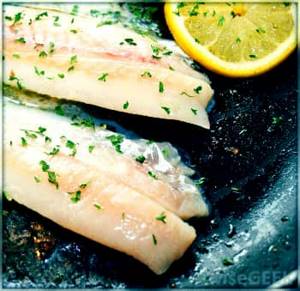
The proprietary nutritional density score provides a nutritional value out of 100 based on 9 different vitamins, minerals and macronutrients. Fish broth has a nutritional value score of 14 out of 100. By comparing whether fish has calcium and the nutritional density of 100g of fish broth, we classify it as medium to low in calcium; In terms of overall nutritional value, we classify it as a medium nutrient dense product.
Amount of calcium per 100 calories
100 calories of fish stock is a 6.25g serving and the amount of calcium is 187.5mg (18.75% RDA). Other important and related nutrients and macronutrients such as fat per 100 calories are as follows:
- protein 12.5 g (25% RDA)
- fat 3.75 g (6.25% RDA)
- carbohydrates 2.5 g (0% RDA).
Contents per typical 244g serving size:
For nutritional fish broth, the typical serving size is 244 g, which contains 73.2 mg of calcium, which is 7% of the recommended daily value. In terms of gram weight and total contents for this serving is:
- calories – 39.04 kcal
- protein content – 4.88 g
- fat content – 1.46 g
- carbohydrate content – 0.98 g.
Who would rather not eat fish due to concerns about mercury and other contaminants?

If you eat enough fish that contains mercury, the toxin can accumulate in your body. It may take several weeks, months or even years for it to clear from the body. Mercury is especially harmful to the brain and nervous system development of unborn children and young children. For most adults, however, mercury is unlikely to cause any health problems.
However, it is better for the following people to limit the amount of fish they consume:
- Women who are pregnant or trying to become pregnant.
- Breastfeeding mothers.
- Children under 12 years of age.
Pregnant women, nursing mothers and children can still reap the health benefits of fish by eating low-mercury fish, such as salmon, in moderation. You need to limit the amount of fish in this way:
- No more than 340 grams of fish per week in total.
- No more than 170 grams of canned tuna per week.
- Avoid eating fish that are high in mercury (shark, swordfish, king mackerel, and tilefish).
How to remove mercury from the body?
Synthetic drugs
There are several ways to remove mercury from the body.
In medicine, special synthetic chelating or complexing substances are used that are capable of reacting with inorganic and organic mercury, as a result of which its concentration in the urine increases and its concentration in the body decreases.
These substances include DMPS (2,3-dimercapto-1-propane sulfonate, Dimaval, and Unithiol) and DMSA (meso 2,3-dimercaptosuccinic acid or succimer).
Both DMPS and DMSA are water-soluble oral drugs, less toxic analogues of BAL (2,3-dimercapto-1-propanol, British Anti-Lewisitedimercaprol), a fat-soluble drug administered by intramuscular injection.
BAL has a high rate of side effects (occurring in ~55% of patients) and also likely redistributes mercury concentrations in the body, increasing them in the brain.
DMPS was created in the Soviet Union in 1958, and in 1978 it became widespread in Western countries. It is a well-researched drug approved for use in Germany and China.
It is used widely by representatives of alternative medicine to treat protection against the effects of mercury entering the body from amalgams used in dentistry for filling teeth.
Selenium
The mineral selenium has a curious property.
According to some scientific studies, selenium has the ability to combine with toxic substances.
In the case of mercury, it is a kind of magnet for it: by entering into a chemical reaction with it, it neutralizes its negative properties 15,16,17, forming chemical substances (Hg-Se), which are removed from the body.
The exact mechanism is still being studied by scientists, however, some of them recommend maintaining normal selenium levels in the body.
Cholesterol content in fish
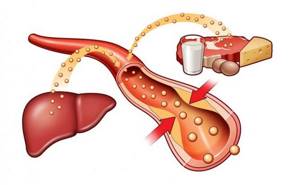
About 70-75% of cholesterol is produced by the liver and about 25% comes from food.
The amount of cholesterol depends on the variety. Based on fat content, the following product categories are distinguished:
- Low-fat varieties (less than 3% lipids): pike, perch, cod and many other freshwater fish.
- Medium-fat (about 8%): sprat, sea bass, carp, bream.
- Fatty species (from 9 to 19%): sturgeon, mackerel, saury.
- Very fatty (more than 20%): salmon, river trout, herring, eel, halibut.
The maximum amount of fat is present in fish in winter, and the minimum is after spawning, that is, in summer.
The cholesterol content in different fish is presented in the table:
| Name | Amount of cholesterol per mg/100g |
| Mackerel | 310-350 |
| Herring | 95-105 |
| Pollock | 90-105 |
| Carp | 200-260 |
| Stellate sturgeon | 280 |
| Pike | 48-50 |
| Sole | 45-49 |
| Cod | 35-39 |
| Trout | 50-55 |
| Hake | 110 |
Daily value for high cholesterol
Doctors recommend that patients with high LDL cholesterol consume no more than 200 mg of cholesterol per day. That is, they can eat no more than 60-70 grams of mackerel or carp. But trout or pollock are allowed in the amount of 200-300 g. This is provided that they are the only source of cholesterol, and all other food is plant-based.
If on this day a person drank a glass of milk (100 mg) or ate a piece of chicken (200 mg), then no more than 100-150 g of low-fat fish can be consumed. It is better to eat fatty varieties on a separate day.
On average, nutritionists advise including standard portions of fatty fish in your diet, 150 grams 2-3 times a week.
Smelt
The sea is full of this modest-sized predatory fish. They are relatives of capelin and salmon. Smelt has a pronounced cucumber aroma. This fish has few bones and makes a tasty dish even without spices.
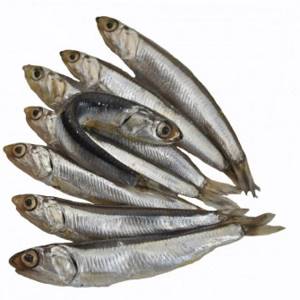
In addition, smelt contains a lot of protein. Like any other fish, smelt is also rich in beneficial properties only when boiled or baked.

Are there any contraindications to eating fish?
The only contraindication is individual intolerance to the product. This applies only to varieties of red fish.
It is not recommended to give fish and fish-based broths to children under one year of age, motivating this by the fact that fish protein is not absorbed in the body at such a young age.
Can fish cause harm?
More likely no than yes. Here everything depends on the quality of the fish itself, on its freshness.
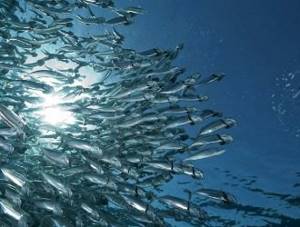
It is recommended to refuse frozen fish, because such a product cannot be objectively visually assessed, and unscrupulous manufacturers and sellers can slip a stale product to the buyer.
A fish bone can be a serious choking hazard. This must be taken into account and try to select all the bones from the fillet as carefully as possible.
Heat treatment also plays an important role. Stewed, boiled and steamed fish will only bring benefits.
But if you get carried away with fried fish in batter, the level of cholesterol in your blood will quickly increase.
Anchovy
Hamsa is a small oceanic fish similar to sprat or capelin. In certain breeds of anchovy, the amount of fat reaches 35% of the total weight of the fish. It is smoked, salted and prepared into delicious dishes.
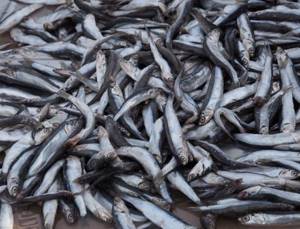
But to get the full amount of high-quality omega-3, you need to bake or boil the fish.
